
- SAP Community
- Products and Technology
- Human Capital Management
- HCM Blogs by SAP
- SAP Commissions - 11 Tips to write better and reus...
Human Capital Management Blogs by SAP
Get insider info on HCM solutions for core HR and payroll, time and attendance, talent management, employee experience management, and more in this SAP blog.
Turn on suggestions
Auto-suggest helps you quickly narrow down your search results by suggesting possible matches as you type.
Showing results for
Product and Topic Expert
Options
- Subscribe to RSS Feed
- Mark as New
- Mark as Read
- Bookmark
- Subscribe
- Printer Friendly Page
- Report Inappropriate Content
01-09-2023
12:21 PM
Writing better functions can save even more time during pipeline calculation
This article will introduce how to write better functions in your formula or in a rule which you can consider it be required as default, so you can re-use at any point in time in your SPM projects.
Functions are predefined formulas provided by SAP Commissions that you can use in compensation rules to calculate and specify values or conditions. In general, functions fall into groups based on their use. For example, a group of functions, called order-level functions, is provided to calculate summary information related to transactions on an order for use in writing credit rules based on orders. Most functions are accessible from the functions listing in the Legal Moves pane. A few functions are accessible from the data fields listing in the Legal Moves pane. These functions are known as data field functions.
The list of functions that are available in SAP Commissions in a particular context depends on the kind of formula, the return type of the formula, and the input to the formula.

Real examples are below is really simple, now we need to find a way to combine them, the more traditional way would be to put functions as arguments of the next function by calling Formula
Feel free to save it, and use it wherever you find it valuable!
List of formula's calling functions which can be common re-usable to have better calculation.
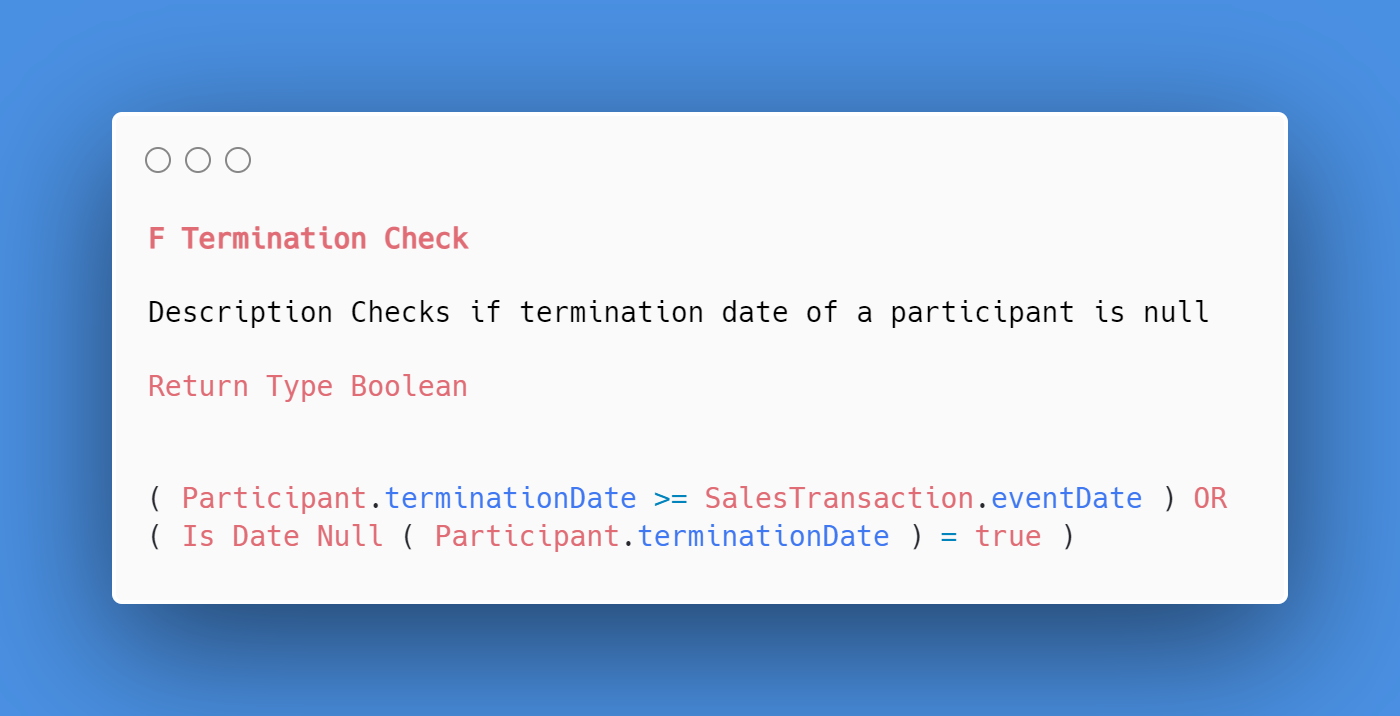

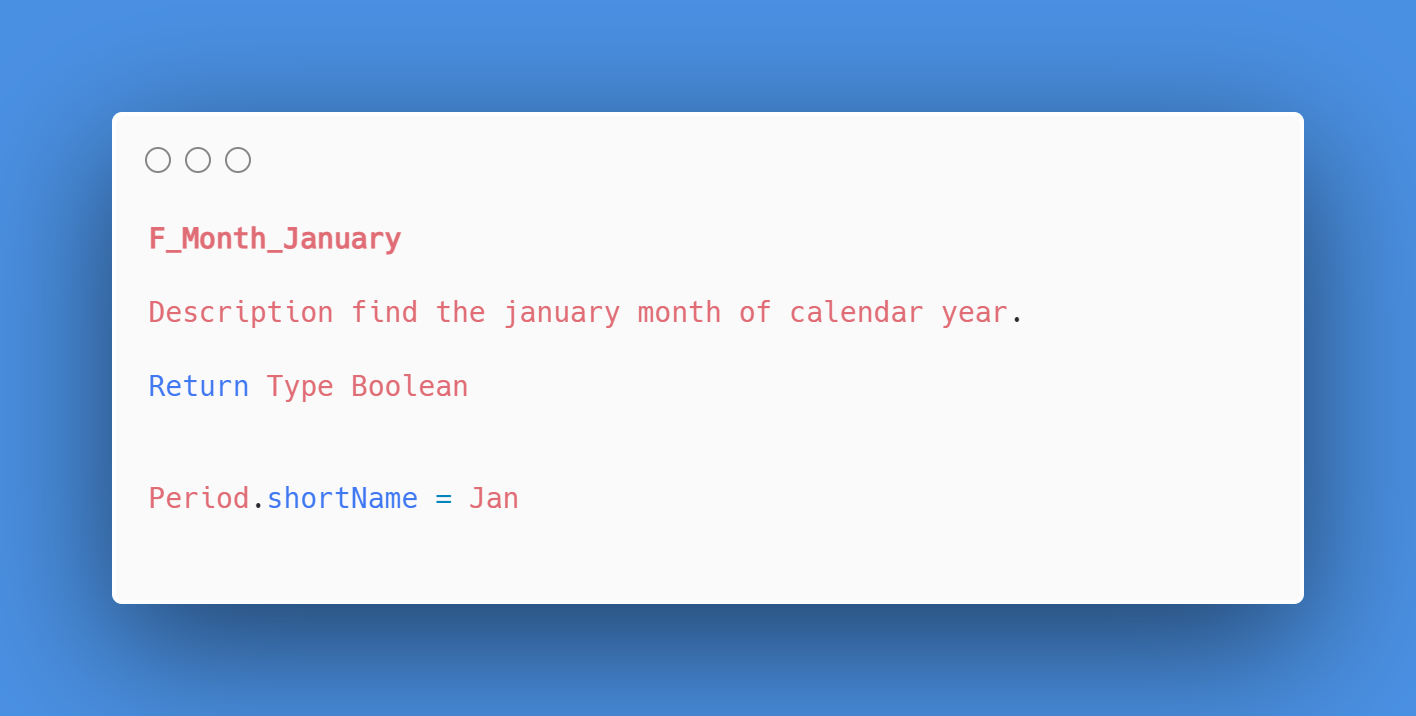

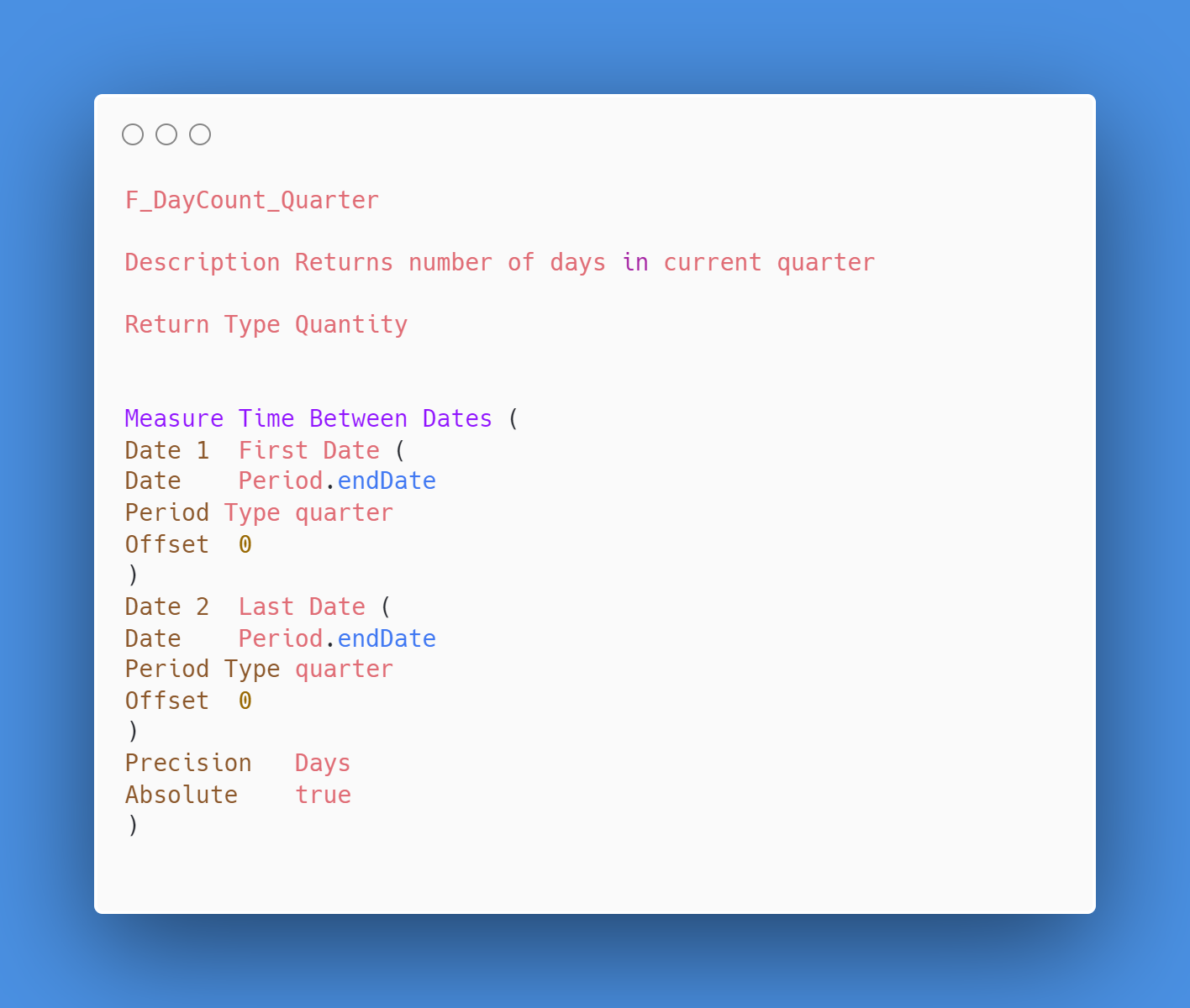
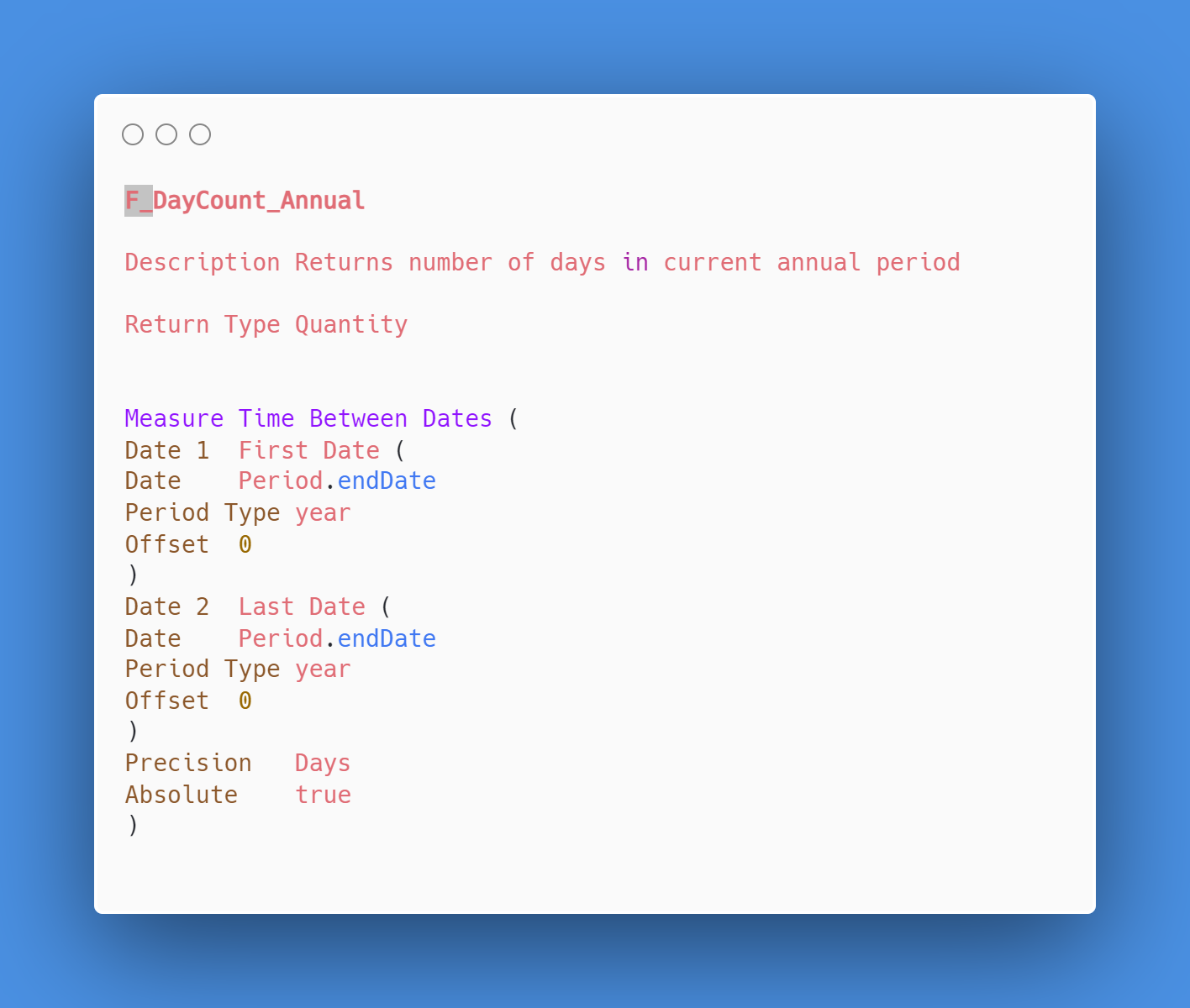




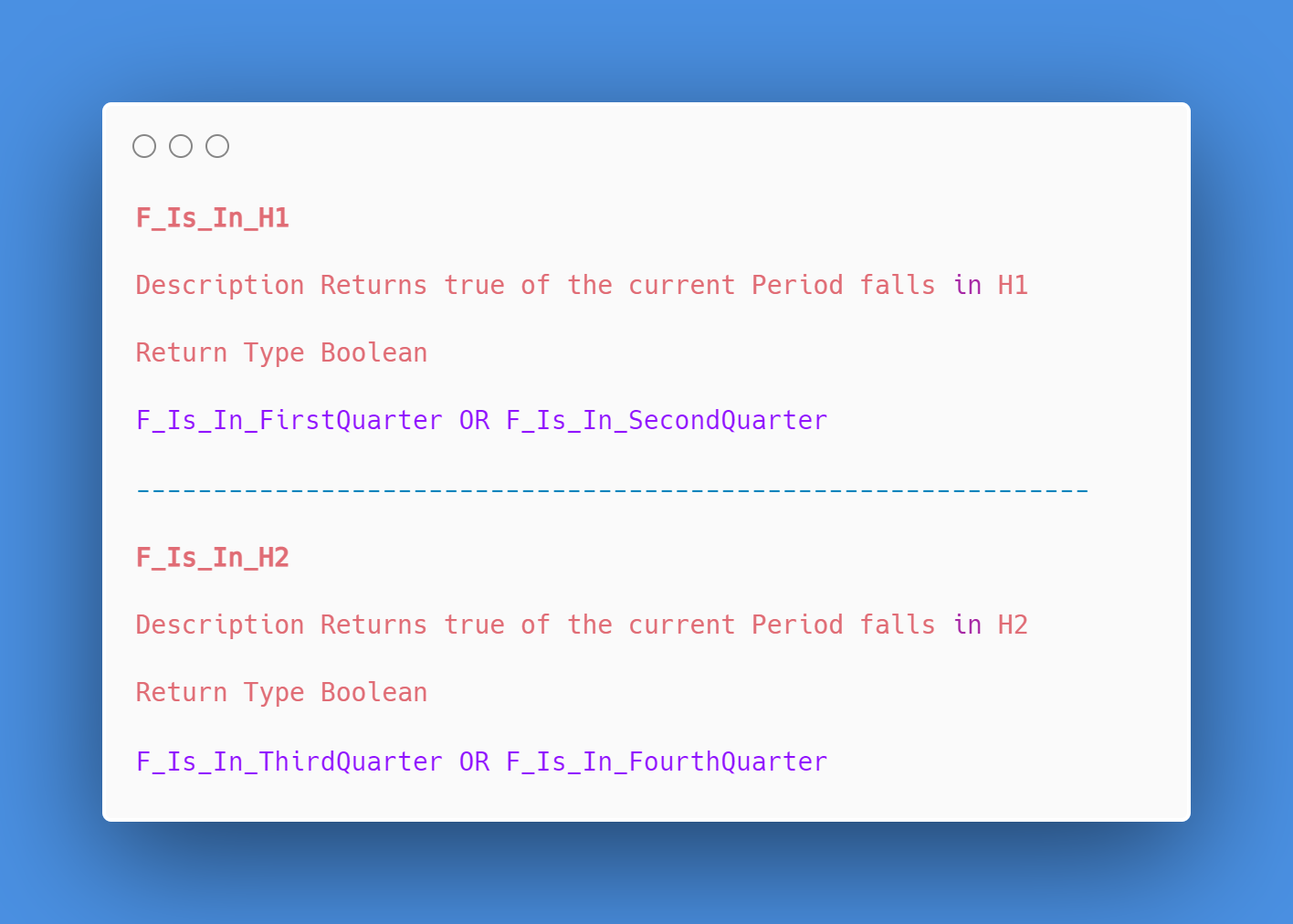

Related Articles
- Absolute
- Calculate Result
- Concatenate Two Strings
- Convert Boolean to Value
- Convert Null to Value
- Convert String to Upper Case
- Convert String to Value
- Convert Value to Boolean

- Current Period
- Equals (Ignore Case)
- Is Null and IsDateNull
- Is In Range
- Max and Min
- Other Position’s Quota or Fixed Value
- Participant.Version() and Position.Version() Functions
- Round
- Set Unit Type
- Transaction.Payee Pre-Assignment () Functions
- Transaction.Classifier()
- Trim String
- Trunc
Related Articles
- About Date Functions
- Add Time to Date
- Calendar Start Date and Calendar End Date
- Convert Date to String
- Convert Number to Date
- Convert String to Date
- Fiscal Date
- Fiscal Period Start Date and Fiscal Period End Date
- Measure Time Between Dates
- Measure Time Overlap
- Measure Period Overlap Percentage
- Measure Periods Between Dates
- Measure Period Overlap
- Measure Period Overlap Percentage
Related Articles
- Sum Prior Quotas or Fixed Values
- Sum Prior Measurements
- Sum Measurements to Date by Participant
- Sum Prior Measurements by Participant
- Sum Prior Incentives
- Sum Incentives to Date by Participant
- Sum Quotas or Fixed Values to Date
- Sum Measurements to Date
- Sum Incentives to Date
 Sum Deposits to Date and Sum Deposits to Date with Status
Sum Deposits to Date and Sum Deposits to Date with Status
Conclusion
Hopefully, this article gave you an insight into the benefits of functions composition and how you can introduce it in your everyday work, if you have any questions leave a comment!
I hope it helped you learn something new!
- SAP Managed Tags:
- SAP SuccessFactors Incentive Management
Labels:
2 Comments
You must be a registered user to add a comment. If you've already registered, sign in. Otherwise, register and sign in.
Labels in this area
-
1H 2023 Product Release
3 -
2H 2023 Product Release
3 -
Business Trends
104 -
Business Trends
4 -
Cross-Products
13 -
Event Information
75 -
Event Information
9 -
Events
5 -
Expert Insights
26 -
Expert Insights
15 -
Feature Highlights
16 -
Hot Topics
20 -
Innovation Alert
8 -
Leadership Insights
4 -
Life at SAP
67 -
Life at SAP
1 -
Product Advisory
5 -
Product Updates
499 -
Product Updates
28 -
Release
6 -
Technology Updates
408 -
Technology Updates
6
Related Content
- SAP Commissions - Productitive APIs for Quick CalculationService in Human Capital Management Blogs by SAP
- SAP Commissions New functions Introduced - Welcomes Groovy Function for Custom Queries in Human Capital Management Blogs by SAP
- Is there a way to create a copy of similar objects for different Channels in Advanced Workflows ? in Human Capital Management Q&A
- SAP Commissions – ⚙️Smart Data Integration[SDI] – Part 6 in Human Capital Management Blogs by SAP
Top kudoed authors
| User | Count |
|---|---|
| 4 | |
| 4 | |
| 2 | |
| 2 | |
| 2 | |
| 2 | |
| 2 | |
| 1 | |
| 1 | |
| 1 |